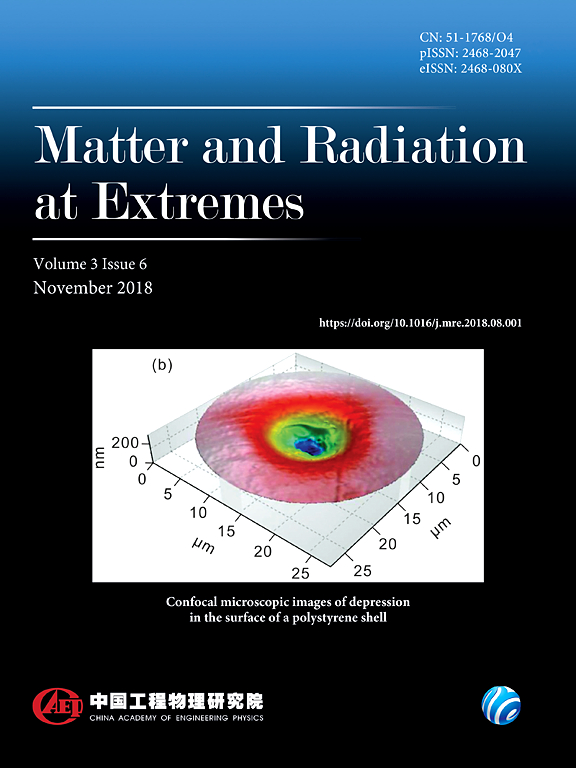Effects of electron heating and surface rippling on Rayleigh–Taylor instability in radiation pressure acceleration
IF 4.8
1区 物理与天体物理
Q1 PHYSICS, MULTIDISCIPLINARY
引用次数: 0
Abstract
The acceleration of ultrathin targets driven by intense laser pulses induces Rayleigh–Taylor-like instability. Apart from laser and target configurations, we find that electron heating and surface rippling, effects inherent to the interaction process, have an important role in instability evolution and growth. By employing a simple analytical model and two-dimensional particle-in-cell simulations, we show that the onset of electron heating in the early stage of the acceleration suppresses the growth of small-scale modes, but it has little influence on the growth of large-scale modes, which thus become dominant. With the growth of surface ripples, a mechanism that can significantly influence the growth of these large-scale modes is found. The laser field modulation caused by surface rippling generates an oscillatory ponderomotive force, directly modulating transverse electron density at a faster growth rate than that of ions and eventually enhancing instability growth. Our results show that when surface deformation becomes obvious, electron surface oscillation at 2 ω0 (where ω0 is the laser frequency) is excited simultaneously, which can be seen as a signature of this mechanism.电子加热和表面波纹对辐射压力加速中瑞利-泰勒不稳定性的影响
在强激光脉冲的驱动下,超薄目标的加速产生瑞利-泰勒样不稳定性。除了激光和靶结构外,我们还发现电子加热和表面波纹是相互作用过程中固有的效应,在不稳定性的演化和生长中起着重要作用。通过简单的解析模型和二维粒子胞内模拟,我们发现加速初期电子加热的开始抑制了小尺度模态的生长,但对大尺度模态的生长影响不大,因此大尺度模态成为主导。随着表面波纹的增长,发现了一个能显著影响这些大尺度模态增长的机制。表面纹波引起的激光场调制产生振荡的质动势,直接调制横向电子密度,使其以比离子更快的速度增长,最终增强不稳定性增长。结果表明,当表面变形变得明显时,在2 ω0 (ω0为激光频率)处同时激发电子表面振荡,这可以看作是该机制的标志。
本文章由计算机程序翻译,如有差异,请以英文原文为准。
求助全文
约1分钟内获得全文
求助全文
来源期刊

Matter and Radiation at Extremes
Physics and Astronomy-Atomic and Molecular Physics, and Optics
CiteScore
8.60
自引率
9.80%
发文量
160
审稿时长
15 weeks
期刊介绍:
Matter and Radiation at Extremes (MRE), is committed to the publication of original and impactful research and review papers that address extreme states of matter and radiation, and the associated science and technology that are employed to produce and diagnose these conditions in the laboratory. Drivers, targets and diagnostics are included along with related numerical simulation and computational methods. It aims to provide a peer-reviewed platform for the international physics community and promote worldwide dissemination of the latest and impactful research in related fields.
 求助内容:
求助内容: 应助结果提醒方式:
应助结果提醒方式:


